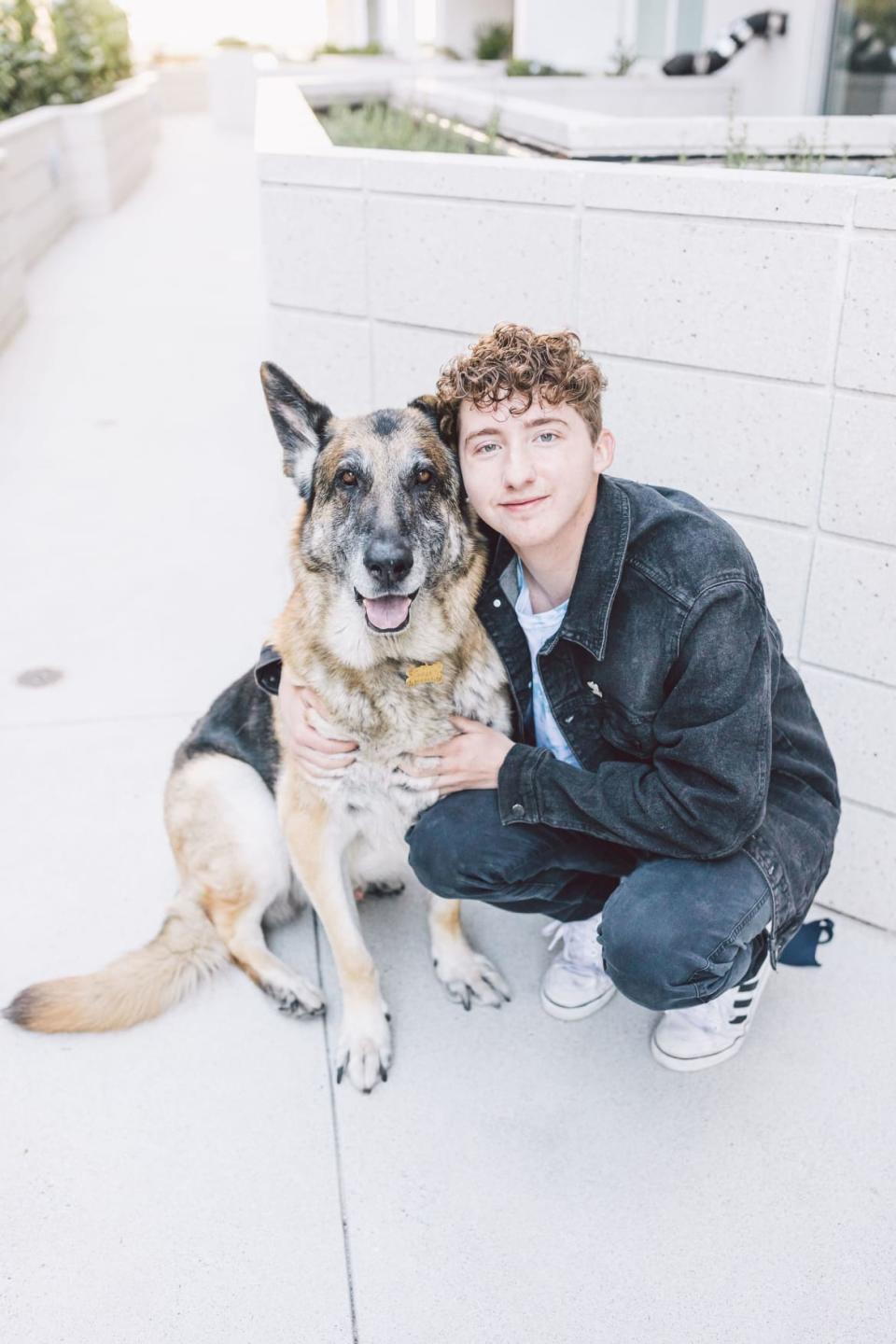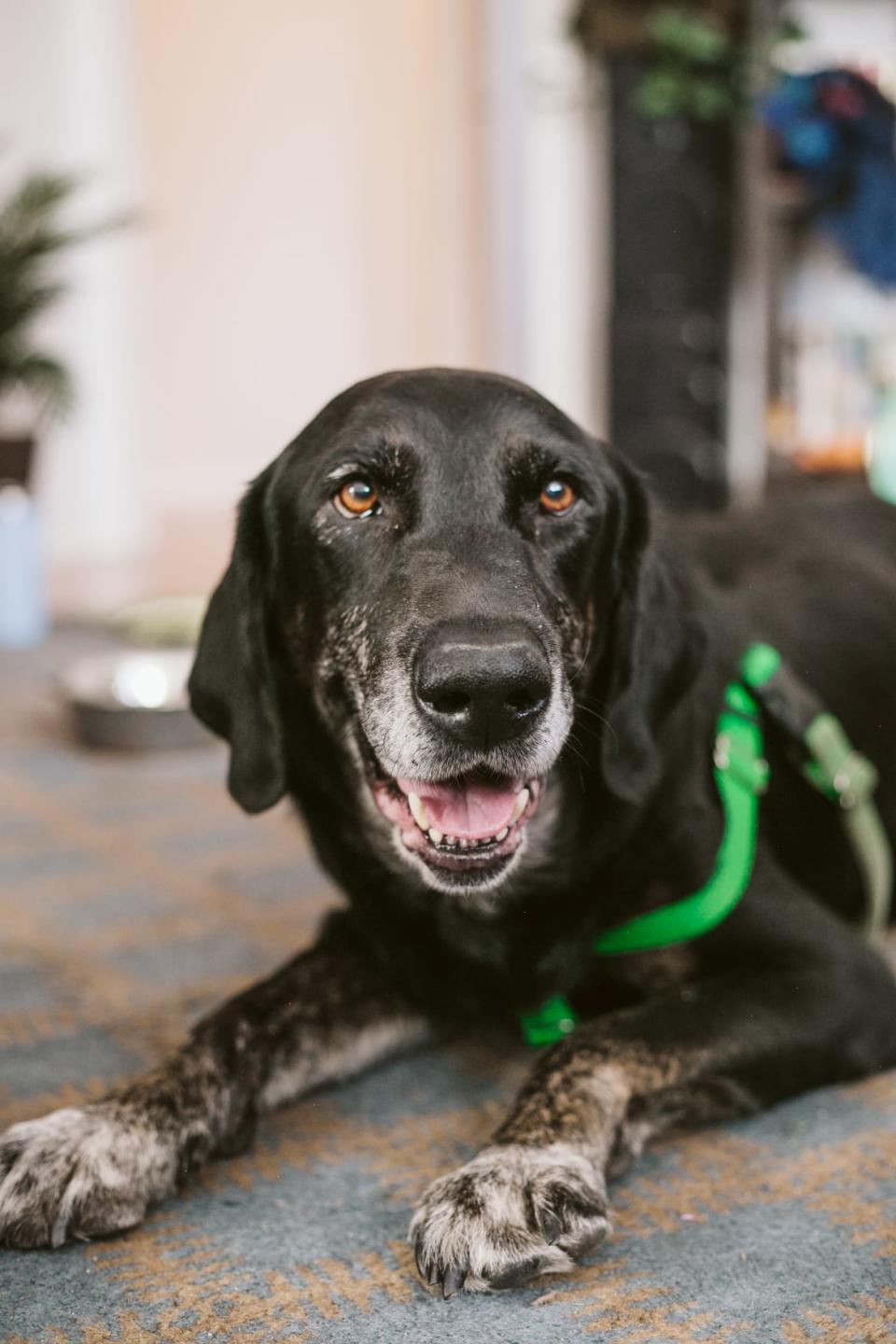How WeRateDogs Became the Last Good Account on the Internet

Matt Nelson never intended to create one of the most popular social media accounts on the internet. In fact, when he made his debut—a Twitter account in 2014—his only real goal was to practice his comedy routine while he studied professional golf management at Campbell University in North Carolina.
Nelson, 27, realized that anytime he would show off his golden retriever or insert her into a joke, the post would do really well. “They were pretty universally loved,” he told The Daily Beast. “I was like, ‘Oh, amazing. I think the internet loves dogs just as much as I do.’”
It was in that realization that WeRateDogs—an account dedicated to rating photos of dogs on a scale of 10 with the final tally always exceeding the scaled limit—was born in 2015. The account quickly became a hit, setting itself apart from the typical noise and cynicism of Twitter.
“It was the perfect storm of what Twitter needed. There were funny animal accounts [at the time], but no one was putting effort into the captions of those photos,” Nelson said of the nearly instant virality of the account. It eventually amassed a following of more than 15 million across social platforms, which now include Facebook, Instagram, and TikTok.
A look at any of the videos and you quickly see why. A recent post featuring a dalmatian curled into a perfect circle racked up more than 950,000 likes, and earned the animal a “12/10” rating. Another showcased a dachshund named Stanley who made friends with a seal earning it a “13/10” rating, while garnering 1 million likes and 5 million views.
It’s a formula that works—and there’s actual science to back it up. Pamela Rutledge, psychologist and author of Exploring Positive Psychology, told The Daily Beast Nelson’s success is grounded in human psychology and behavior.
“It’s easy to see the appeal of an account that makes you feel good without social baggage,” Rutledge explained. “Social media has anthropomorphized pets to give opinions and remarks on the absurdity of life. Laughing and smiling alter our brain chemistry and trigger the reward center.”
She added that dogs are considered “safe love objects” that trigger oxytocin in humans. “What’s not to like?”
How to Rate Dogs and Influence People
Nelson’s initial concept for the account was to walk around photographing dogs, followed by writing a caption with an accompanying rating for content.
“After our very first post, I forgot to turn our DMs off,” he said. “And so we got a flood of DMs that were like ‘Please rate my dog’ and I was like, ‘This is so much better because it's a never ending content stream.””
By early 2016, the account had grown to a million followers. Nelson said that it was “hard to ignore” the influence that his platform had—especially with the level of engagement they regularly received on a post. From there, it only grew.
In addition to people sending photos of their dogs to be rated, families were also beginning to send GoFundMe accounts for mounting medical bills for pets. Nelson resisted posting fundraising links, because he wasn’t sure how the audience would respond—but he was given an opportunity to test the waters.

Matt Nelson (right) and his dog (left).
“We had featured this family of dogs that was three pugs and a yellow Lab and they always dressed up for the holidays,” he explained. “And one of the pugs needed a mobility wheelchair due to generic senior things, no specific [illness].”
Nelson said he knew that “if there were ever a time that [our audience] would support anything, it would be a dog they're familiar with,” so he posted the campaign. In 45 minutes, the $700 mobility wheelchair was fully funded and Nelson was stunned.
“Not only can we do this, but everyone was thrilled about it. It was like they were waiting for this opportunity,” he said. “Somehow we had curated a very passionate and empathetic audience before even tiptoeing into fundraising.”
Rocky Recovery
WeRateDogs, which goes by Dog Rates on X, formerly known as Twitter, continued to experiment with sharing fundraisers for the duration of 2016.
“We learned that there was no limit to what we were capable of,” Nelson said, adding the most successful campaign that year was raising over $10,000 in a couple of hours. By the end of the year, Nelson committed to having fundraising as a cornerstone of the account. In 2017, WeRateDogs began posting fundraising campaigns every Friday, only skipping a week if there is an emotional update, such as a dog dying, from the previous week.
“The posts look very similar to our traditional content,” Nelson shared. “Instead of a few short sentences with the intention of making you laugh, it’s just a few short sentences explaining their medical situation and why they're deserving of these funds.”
As the account’s following grew, so did the need for dogs across the country. Nelson set up a link where followers could submit their GoFundMe pages—and the page began getting “upwards of 200” submissions each week. “And we had to pick one,” he said.
Nelson said the brand was typically able to fund three GoFundMe accounts per week thanks to their generous following and partnerships. But he came to a crossroads when he realized that his audience was funding campaigns faster than GoFundMe could keep up, ultimately over funding many dogs without any recourse for ensuring financial overages were being allocated to a dogs’ medical care.
Without being in full control of the funds, there was no way to make sure campaigns got exactly what they needed and any overages got allocated to other dogs in need.
Nelson, who had begun adding team members to help support the brand, began brainstorming ways to make their fundraising efforts better. They landed on focusing on shelter dogs to give them “complete control of everything.” That’s how the team’s non-profit foundation dubbed 15/10 was born in Nov. 2021.
“The foundation sponsors shelter dogs with medical needs who are unlikely to make it out of the shelter,” Nelson said, adding that years of audience support helped guide the foundation’s mission.

Rocky the Dog. With the help of the 15/10 Foundation, Rocky was able to see a cardiologist and be treated for heartworm very carefully. While the dog ended up passing away less than a year later, he was able to do so in the comfort of a foster home.
One Tail At A Time, a Chicago-based animal rescue, has been on the receiving end of donations through 15/10 and marketing manager Kim Thomas said it has “permanently changed One Tail for the better.”
“This means we can say ‘yes’ to many more medical cases, knowing we will have the support of the 15/10 and WeRateDogs team,” Thomas told The Daily Beast. “We take the complex cases. We take the expensive cases. We take the animals that may not make it. But we get to try knowing we have an enormous pool of support, because every dog should have a chance.”
One such case was Rocky, who came to One Tail in May 2023 with congestive heart failure and severe heartworm disease. He was living outside without an owner or medical care.
“He was way too sweet to suffer outside, so we agreed to take him in, knowing he may be a very expensive dog to treat,” Thomas said. With the help of the 15/10 Foundation, Rocky was able to see a cardiologist and be treated for heartworm very carefully. While the dog ended up passing away less than a year later, he was able to do so in the comfort of a foster home.
Every Dog Has Its Day
Since the platform began sharing fundraisers, WeRateDogs has raised more than $3.5 million for dogs in need across the country—a reward Nelson said is far greater than any social reach.
“To see how we are making a difference has been revitalizing for our team,” Nelson said. “It's much more fulfilling to be measuring success via dogs saved than likes on a post.”
However, Nelson said even the most wholesome of content, like rating cute and funny dogs, can bring polarizing opinions to their comment section, especially when a dog has been wronged by someone or something. “We’re not immune, it’s the internet,” he added.
But the voice behind the dogs takes it in stride. While the account may not be fully exempt from the wrath of internet trolls, Nelson undoubtedly wields a digital anomaly for good.
Alongside two business partners and 12 independent contractors, he has accomplished a rare feat on the internet: cultivating an account that manages to unite people across beliefs, politics, class structures, and ideologies.
While the original intention of the account didn’t include transcending social constructs, it’s an achievement that seems especially notable when many online posts can feel instantly polarizing and keyboard warriors lurk, waiting for a misstep.
But, just like a dog, a little bit of humor, loyalty, and goodwill can go a very long way.
“It's a roller coaster of dopamine to post and engage and see the numbers and see how many people we are reaching,” he said. “But to see that support carry over into the foundation and the real world effects… It’s just so rewarding.”
Get the Daily Beast's biggest scoops and scandals delivered right to your inbox. Sign up now.
Stay informed and gain unlimited access to the Daily Beast's unmatched reporting. Subscribe now.

 Yahoo News
Yahoo News 
